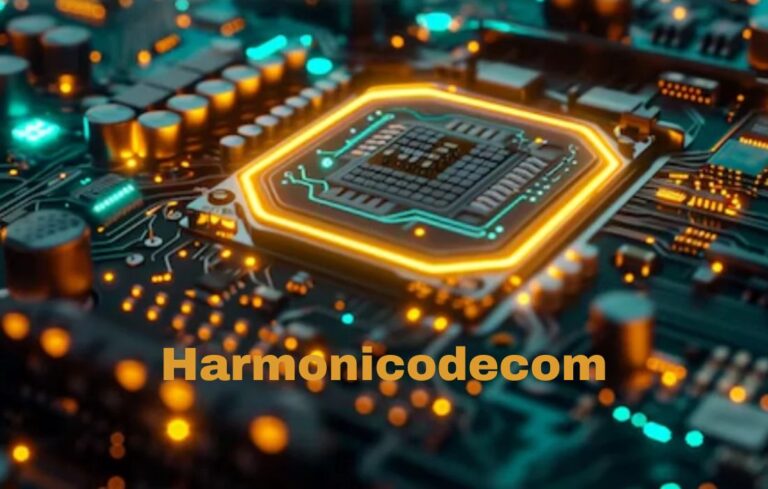In the realm of signal processing, understanding and manipulating complex waveforms is crucial. This is where harmonic decomposition, or “Harmonicodecom,” plays a pivotal role. A powerful mathematical tool, Harmonicodecom breaks down intricate signals into their simplest components, offering clarity and precision that are indispensable in today’s high-tech environment. This article explores the fundamental concepts, significant applications, and the transformative potential of Harmonicodecom across various industries.
Understanding Harmonicodecom
What is Harmonicodecom?
Harmonicodecom stands for harmonic decomposition, a method used extensively in fields like acoustics, telecommunications, and electrical engineering. This technique involves decomposing complex waveforms into simpler, sinusoidal components known as harmonics. These components are easier to analyze and offer a granular view of the original waveform’s structure.
Fundamentals of Harmonicodecom
At its core, Harmonicodecom relies on identifying the fundamental frequency—the lowest frequency of a waveform—and its harmonics, which are integer multiples of this base frequency. This separation into fundamental and harmonic frequencies is crucial for many technological applications, from audio engineering to data transmission.
Technical Insights
How Harmonicodecom Works
The process of harmonic decomposition is rooted in Fourier analysis—a form of mathematical analysis that expresses a function as a sum of periodic components and can recover the signal from these components. The Fourier Transform, a tool within this analysis, converts a time-domain signal into a frequency-domain signal, simplifying the complexity of understanding and manipulating the data.
Key Mathematical Concepts
Harmonics and Fundamental Frequencies are the backbone of Harmonicodecom. Each harmonic in a waveform corresponds to a specific frequency component, and their collective interaction forms the complex signal. Understanding these elements allows engineers to reconstruct or modify signals with high precision.
Applications of Harmonicodecom
In Telecommunications
In telecommunications, clarity and accuracy of signal transmission are paramount. Harmonicodecom enhances these aspects by breaking down signals to detect and rectify distortions that might affect the quality of communication.
In Audio Engineering
Sound engineers leverage Harmonicodecom to improve audio quality. By isolating and manipulating harmonics, they can enhance sound clarity, eliminate unwanted noise, and create audio outputs that are true to the original performances or recordings.
In Medical Imaging
Medical imaging technologies, such as MRI scans, depend on Harmonicodecom to dissect complex signals into manageable components. This breakdown aids in producing clearer, more detailed images that are crucial for accurate diagnoses.
Advantages of Harmonicodecom
Enhanced Signal Clarity
By deconstructing a signal into its fundamental components, Harmonicodecom allows for a clearer understanding of the data being transmitted. This is especially beneficial in environments where precision is necessary, such as in satellite communications and high-speed internet services.
Accuracy in Data Analysis
The precision offered by Harmonicodecom ensures that data analysts and engineers can make more informed decisions based on accurate, detailed signal components. This leads to improvements in system designs and troubleshooting methods, particularly in complex electronic and acoustic systems.
Challenges and Solutions
Overcoming Harmonic Distortion
Harmonic distortion can obscure the true nature of a signal. Engineers use various filtering techniques to reduce this distortion, ensuring the integrity and accuracy of the signal analysis.
Handling Complex Signals
Real-world signals often contain a mixture of noise and other complications, making their analysis challenging. Advanced computational techniques and hardware improvements have made it possible to handle these complexities more effectively.
Future Trends and Innovations
Integration with AI and Machine Learning
The future of Harmonicodecom looks promising with the integration of AI and machine learning technologies. These tools can learn from vast amounts of data to predict and improve signal processing tasks, enhancing the speed and accuracy of harmonic decomposition.
Technological Advancements
Continued advancements in computing power and algorithm efficiency are expected to expand the capabilities of Harmonicodecom. Real-time processing enhancements will allow for more dynamic applications in autonomous vehicles and other cutting-edge technologies.
Conclusion
Harmonicodecom is a cornerstone technology in signal processing, offering unmatched clarity and precision that enhance a multitude of modern technological applications. As we continue to innovate and integrate more advanced computational techniques, the role of Harmonicodecom in shaping the future of Technology is both transformative and indispensable.
FAQs About Harmonicodecom
1. What is Harmonicodecom used for?
Harmonicodecom, or harmonic decomposition, is primarily used to break down complex waveforms into simpler sinusoidal components. This method is crucial in various fields such as audio engineering, telecommunications, and electrical engineering, where it improves signal clarity, enhances data analysis accuracy, and facilitates the identification and correction of signal distortions.
2. How does Harmonicodecom improve sound quality?
In audio engineering, Harmonicodecom isolates individual harmonic components from a sound signal. By manipulating these components—such as filtering out unwanted noise or enhancing certain frequencies—sound engineers can significantly improve the clarity and quality of the audio. This process is essential for achieving high-quality recordings and broadcasts.
3. What is the difference between a harmonic and a fundamental frequency?
The fundamental frequency is the lowest frequency of a periodic waveform and serves as the base frequency from which harmonics are derived. Harmonics are integer multiples of this fundamental frequency. While the fundamental frequency determines the pitch of the sound, harmonics contribute to the timbre or color of the sound, adding richness and complexity to the waveform.
4. How is Harmonicodecom used in medical imaging?
In medical imaging, especially in techniques like MRI scans, Harmonicodecom is used to simplify complex signals into their component frequencies. This simplification helps in creating clearer, more detailed images that are crucial for accurate medical diagnostics. It allows radiologists to better distinguish between different types of tissues and structures within the body.
5. What are the main challenges of Harmonicodecom?
Key challenges in Harmonicodecom include:
- Harmonic Distortion: This occurs when harmonics deviate from their ideal frequencies, potentially leading to inaccuracies in signal analysis.
- Complexity of Real-World Signals: Real-world signals often contain noise and other irregularities that can complicate the decomposition process.
- High Computational Costs: Analyzing complex waveforms, especially in real-time applications, requires significant computational resources, which can be a challenge to manage efficiently.
6. How are challenges in Harmonicodecom addressed?
To address the challenges faced in Harmonicodecom, professionals use several strategies:
- Use of Filtering Techniques: Advanced filtering techniques help in reducing harmonic distortion and isolating the desired signal components.
- Improved Algorithms: Algorithms like the Fast Fourier Transform (FFT) reduce the computational burden, allowing for quicker and more efficient signal analysis.
- Noise Reduction Methods: Techniques to minimize background noise and other signal interferences are employed to ensure the accuracy of the harmonic decomposition.
7. What future developments are expected in the field of Harmonicodecom?
The future of Harmonicodecom is likely to be influenced heavily by advancements in artificial intelligence and machine learning. These technologies are expected to automate and optimize the process of signal analysis, enhancing the ability to process signals in real-time and with greater accuracy. Additionally, ongoing improvements in computational algorithms and hardware will expand the applications of Harmonicodecom in more dynamic and demanding environments such as autonomous vehicle technology and advanced robotics.

